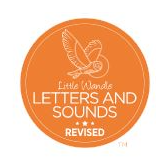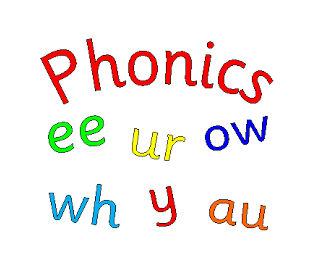Phonics and Early Reading
Intent:


At Sheen Mount, we are passionate about supporting all children in becoming confident and enthusiastic readers and writers. We aim to develop each child so that they are able to read with fluency as well as develop a love of reading that will stay with our children all their lives. Being able to read is the most important skill children will learn during their early schooling and has far-reaching implications for lifelong confidence and well-being. Early reading skills and phonics are fundamental in giving children the skills needed to enjoy and access their learning and the wider world around them.
In order to read and understand texts, children must learn to recognise/decode the words on the page. Phonics is the process that is used to help children break down words into sounds/phonemes (segmenting) and put sounds/phonemes back together to read words (blending). Children further learn to segment words to support their spelling , making phonically plausible attempts at spelling words. This is why we teach reading through Little Wandle Letters and Sounds Revised, which is a systematic and synthetic phonics programme. We transitioned from using Letters and Sounds previously, to using the Little Wandle programme in October 2021.
As a result, all our children are able to tackle any unfamiliar words that they might discover. At Sheen Mount, we also model these strategies in shared reading and writing both inside and outside of phonics lessons and across the curriculum. We have a strong focus on the development of language skills for our children because we know that speaking and listening are crucial skills for reading and writing in all subjects.
‘’Reading and writing floats on a sea of talk” (James Britton, 1983)
By the end of their time here at Sheen Mount, our children will be able to read fluently and confidently. Our readers will be equipped with tools to tackle unfamiliar vocabulary. We also want to encourage our children to see themselves as readers for both pleasure and purpose.
Implementation-How phonics is taught at Sheen Mount:
At Sheen Mount Primary School, we believe that for all our children to become fluent readers and writers, phonics must be taught through a systematic and structured phonics programme. We use Little Wandle Letters and Sounds Revised to plan and provide daily engaging phonics lessons. In phonics, we teach children that the letters of the alphabet represent a different sound/phoneme, that these can be used in a variety of combinations and are put together to make words. The children learn to recognise all of the different sounds/phonemes and grapheme combinations that they might see when they are reading or writing. Our phonics teaching starts in Reception and follows a very specific sequence and allows children to learn the simple code. Children build on their previous phonic knowledge and master specific phonic strategies as they move through school. In Key Stage One phonics continues as daily lessons and children explore the more complex code whilst also remembering and applying more. By following a clear progression, children are provided with a structured, clear route to meet the expected standard in word reading and spelling.
Daily lessons:
We follow the Little Wandle Letters and Sounds Revised Progression (See attachment below):
- Children in Reception are taught to read and spell words using Phase 2 and 3 GPCs, and words with adjacent consonants (Phase 4) with fluency and accuracy.
- Children in Year 1 review Phase 3 and 4 and are taught to read and spell words using Phase 5 GPCs with fluency and accuracy.
- Children in Year 2 revisit and revise GPCs in Phase 5 for reading and also investigate patterns and rules in order to focus on the spelling of these words. Lessons then link to the Year 2 National Curriculum for Spelling and Grammar (previously Phase 6 of Letters and Sounds).
Repeated practice and other opportunities for reading:
Children have plenty of opportunities for reading and experience different kinds of reading with us so that they can apply their phonics to reading and writing, so that deeper learning takes place. Children are given the opportunity to have same day practice of the focus GPCS and words taught in the daily phonics lesson.
Comprehension and reading for pleasure:
Children have lots of opportunities to develop reading for pleasure and teachers use high quality texts from the class reading area to support this. From Reception, each child is given a home reading record. The parent/carer records comments to share with the adults in school and the adults will write in this on a regular basis to ensure communication between home and school. Comprehension skills are developed through the sharing of high quality texts linked to English and different areas of the curriculum and when completing group or 1:1 reading sessions.
Opportunities for reading:
Reception:
- Reading around the classroom during continuous provision
- During phonics lessons and other carpet sessions throughout the day
- During challenges as part of continuous provision, including the outdoor area
- 1:1 reading with a teacher and teaching assistant
- Formal reading sessions every 2 weeks, where feedback is given in reading records to parents
- Weekly library session to instil a love of reading from an early age
- Story time every day
- Access to the reading corner
KS1:
- Shared reading
- Group guided reading/reading practice sessions
- 1:1 reading with a teacher and teaching assistant
- Children are formally read with either 1:1 or in guided group every 2 weeks
- Longer reading sessions/reading conferencing is used to support assessment
- Weekly library session to instil a love of reading from an early age
- Story time every day
- Access to the reading corner
Assessment:
Children are assessed in different ways, formally and informally, to track progress and provide extra support, and to support us in matching children’s reading practice book to their developing phonics knowledge. Teachers will continuously be reviewing children’s developing phonics knowledge and make changes as needed.
-
- Half termly review lessons are taught which recaps the learning
- Ongoing formative assessment is used to support children and identify any gaps
- Children are assessed every half term using Little Wandle Assessments
- Children in Year 2 sit the Phonics Screening Check in December (having been cancelled in Year 1)
- Children in Year 1 sit the Phonics Screening Check in the summer term.
Reading and help at home:
You can continue to have a huge impact on their reading journey by continuing their practice at home. There are two types of reading books that your child will bring home:
Reading practice book
This book needs to be matched to their phonic stage and be fully decodable. At Sheen Mount we mainly use the Big Cat Phonics Little Wandle Letters and Sounds Revised books. The reading practice books will be at 95% fluency, which means children should be reading sentences, without sounding, for 95% of the time and for the other 5% using their segmenting and blending skills. If it is not based on this, then reading becomes frustrating and becomes a barrier to developing key early reading skills. Your support is needed to help children practise reading and develop fluency with a book they may have already read at school.
- If your child is reading it with little help, please don’t worry that it’s too easy – the most important thing is that your child needs to develop fluency and confidence in reading.
- Listen to them read the book. Remember to give them lots of praise – celebrate their success!
- If they can’t read a word, read it to them and help them segment and blend.
- After they have finished, talk about the book together.
Sharing book
In order to encourage your child to become a lifelong reader, it is important that they learn to read for pleasure. The sharing book is a book they have chosen for you to enjoy together.
- Please remember that you shouldn’t expect your child to read this alone.
- Read it to or with them.
- Discuss the pictures, enjoy the story, predict what might happen next, use different voices for the characters, explore the facts in a non-fiction book.
- The main thing is that you have fun!
Practising phonics
You may want to support your child in practising their phonics at home. This can be done by reading the reading practice books regularly and also providing extra opportunities by:
- Practising speedy sounds using the grapheme mats
- Using https://lettersandsounds.org.uk/for-home/overview for additional phonics video lessons
- Playing different oral blending, segmenting and blending and reading games using different useful websites on the document below called 'Useful resources and websites'.
Resources
You may find many of the resources below useful when reading and writing at home.
- The Little Wandle Programme overview document
- Phase 2 and 3 Grapheme Mats (Reception) and Phase 5 for KS1
- Guidance for clear pronunciation of phonemes in Phase 2 and 3
Here is a link to the parents' page of the Little Wandle website which also has all the resources attached. Importantly, it also has videos of how to pronounce the phonemes in phase 2, 3 and 5, as well as videos of how tricky/exception words are taught and how blending is taught. There is also information about how reading can be supported at home further.
https://www.littlewandlelettersandsounds.org.uk/resources/for-parents/
Phonics Screening Check Results:
Year 2 2021 Results: 96%
Year 2 2020 Results: 96%
Year 1 2019 Results: 93%
